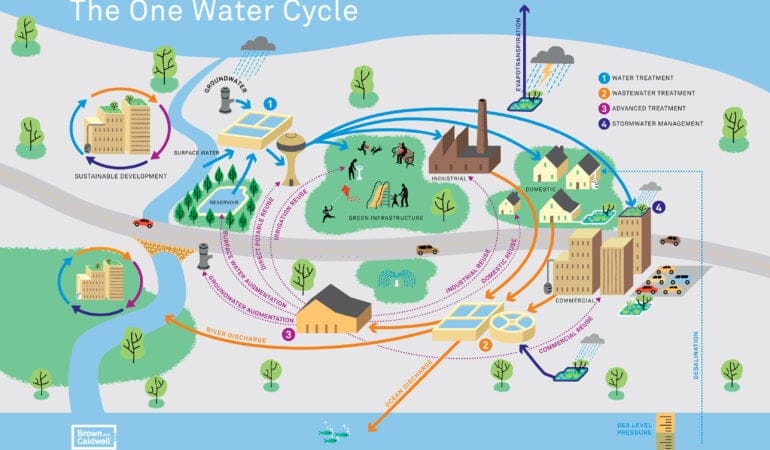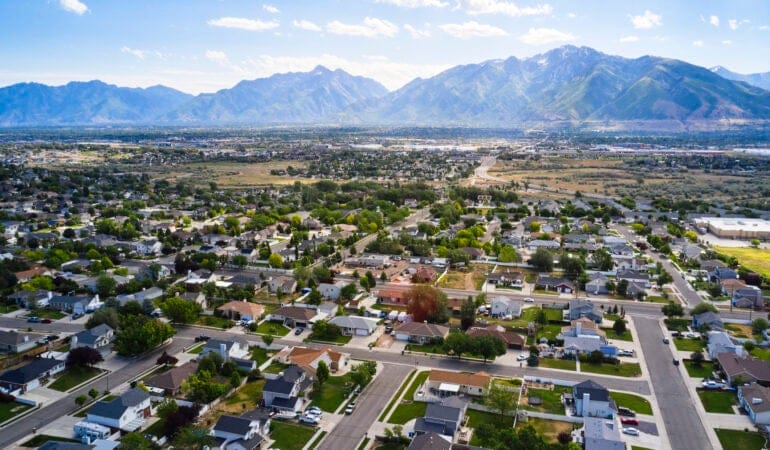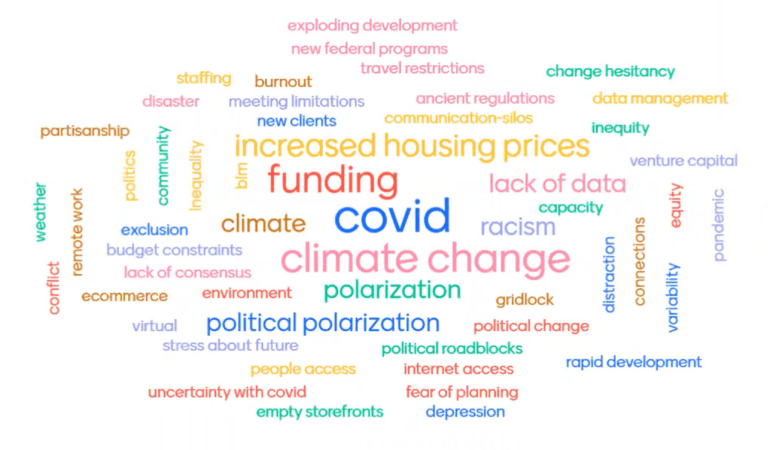2022 Journalists Forum
Abril 1, 2022 - Abril 2, 2022
Cambridge, MA United States
Free, offered in inglés
The Lincoln Institute’s 2022 Journalists Forum, held April 1–2 in Cambridge, Massachusetts, explored the central role of land in addressing the climate crisis, with thought leaders identifying trends, underreported stories, and fresh angles to guide journalistic storytelling at this pivotal time. The Forum investigated how land policy can contribute to an equitable net-zero transition amid competing pressures, including market-driven speculation for higher ground and land that will be newly viable in a warming world. The Forum also included two “Practicing the Craft” sessions, during which the invited journalists shared perspectives on the challenges of covering the story of the century.
Resources
2022 Lincoln Institute Journalists Forum: A Recap on the Land Matters podcast
In Petaluma Neighborhoods, the ‘Extravagant Life’ Is Over as Climate Activism Grows
“Bill McKibben, who most recently founded an environmental movement for people older than 60 called Third Act, said in an interview that privileged Americans, specifically those near or at retirement age, must muster their wealth and influence to push governments and corporations to divest in fossil fuels.”
—Julie Johnson, San Francisco Chronicle
Biofuels Are Accelerating the Food Crisis — and the Climate Crisis, Too
“Our food and climate crises are largely land crises. We need the limited land on earth to produce massive amounts of food and store massive amounts of carbon.”
—Michael Grunwald, author
How Can We Change Land Use at a Time of Climate Crisis and Competition?
“Changing the way we use the land will be perhaps one of the greatest opportunities we will have to mitigate climate change, only if we do it early, only if we do it.”
—Tais Gadea Lara, RedAcción
The Colorado River is in Crisis, and It’s Getting Worse Every Day
“Demand in the fast-growing Southwest exceeds supply, and it is growing even as supply drops amid a climate-change-driven megadrought and rising temperatures.”
—Karin Brulliard, Matt McClain, and Erin Patrick O’Connor, with John Muyskens from the Washington Post
Welcome and Opening
Speakers
George W. “Mac” McCarthy, U.S. CEO and President, Lincoln Institute of Land Policy
Brian Golden, former Director, Boston Planning and Development Agency
Further Reading
- How to Fend Off Land Speculation
- Developers Help Foot Climate Resilience Bills in Boston
- Brian Golden’s Presentation
Land in Competition
Land can help address the climate crisis, but it is under tremendous pressure from market forces running far ahead of planning and regulation, while competing demands—agriculture, renewable energy, carbon sequestration—are leading to relentless conflicts.
Speakers
Patrick Welch, Climate Strategies, Lincoln Institute of Land Policy
William Moomaw, Tufts University
Ona Ferguson, Consensus Building Institute
Amanda Kolson Hurley, Bloomberg Green (moderator)
Further Reading
Land, Water, and Agriculture
The world will need hundreds of millions of additional acres of agricultural land to feed its people—but the same amount needs to be kept in conservation, to soak up carbon and save water. This discussion explores the shift in agricultural and water and land management practices with the Colorado River Basin as case study.
Speakers
Bruce Babbitt, former governor of Arizona, Secretary of the Interior
Jim Holway, Babbitt Center for Land and Water Policy
Naveen Sikka, CEO, Terviva
Mike Grunwald, Politico (moderator)
Further Reading
- Integrating Land Use and Water Management
- Cultivating Change (video)
- Just the Facts: Land, Water, and Agriculture in the Colorado River Basin
- This super tree could help feed the world and fight climate change
Land in Conservation
Deforestation and land clearing are accelerating despite research showing natural areas do an extraordinary job sequestering carbon. Pledges by the Biden administration and governments around the world are complicated by equity issues in developing world economies, and by a gaming of the system to claim exaggerated carbon offsets.
Speakers
Jim Levitt, International Land Conservation Network
Chandni Navalkha, Sustainably Managed Land and Water Resources, Lincoln Institute
Mark Anderson, The Nature Conservancy/Lincoln Institute Kingsbury Browne Fellow, 2021–22
Anthony Flint, Lincoln Institute of Land Policy (moderator)
Further Reading
- Nature Conservancy Resilient Land Mapping Tool
- From the Ground Up: How Land Trusts and Conservancies Are Providing Solutions to Climate Change
- Jim Levitt’s Presentation
Practicing the Craft I
A brief overview of climate coverage collaboratives, and a discussion of emerging institutional structures and journalistic approaches to match the enormity of the climate story.
Speakers
Nancy Gibbs, Shorenstein Center on Media, Politics and Public Policy, Harvard Kennedy School
Andrew McCormick, Covering Climate Now
Amrita Gupta, Earth Journalism Network
Further Reading
State of the Biden Climate Agenda
A discussion of the prospects for meaningful national climate policy in the United States in the context of political polarization and legislative gridlock.
Speakers
Bill McKibben, Middlebury College
Andrew Wishnia, Deputy Assistant Secretary for Climate Policy, US Department of Transportation
Further Reading
Land and Climate Finance
Public investments in both climate mitigation and adaptation increase land values—and therein lies a source of revenue to finance climate action, which is being tested in Boston and around the world.
Speakers
Enrique Silva, Vice President of Programs, Lincoln Institute of Land Policy
Erwin van der Krabben, Radboud University, The Netherlands
Lourdes German, Executive Director, The Public Finance Initiative, faculty, Harvard University Graduate School of Design
Meghan Stromberg, Planning magazine (moderator)
Further Reading
- Erwin van der Krabben’s Presentation
- Land Value Return: Tools to Finance Our Urban Future
- Return on Investment: Research Links Climate Action with Land and Property Value Increases
Land Vanishing
Managed retreat is increasingly part of the policy conversation. Yet climate migration is fraught with fairness and equity issues, even as some Americans move to, or remain in, areas at high risk of flooding, fire, and drought.
Speakers
Amy Cotter, Director, Climate Strategies, Lincoln Institute of Land Policy
Daryl Fairweather, Chief Economist, Redfin
Rachel Cleetus, Union of Concerned Scientists
Lanor Curole, United Houma Nation
Alexandra Tempus, freelance journalist and author (moderator)
Further Reading
- Uprooted: As the Climate Crisis Forces U.S. Residents to Relocate, a New Conversation Emerges
- Buy-In for Buyouts: The Case for Managed Retreat from Flood Zones
Land From Above
Technological advances are enabling a global dashboard for monitoring the planet’s land use changes—whether deforestation, inundation, or drought—that can facilitate policy measures in real time, and provide data visualizations for powerful, interactive storytelling.
Speakers
Jeff Allenby, Center for Geospatial Solutions, Lincoln Institute of Land Policy
Peter Colohan, Internet of Water Initiative, Lincoln Institute of Land Policy
Further Reading
- 2030 Is Coming Soon—Let’s Get to Work
- The Internet of Water Initiative Will Help Policy Makers Address Climate Change
- Maps of sustainable landscapes from the Lincoln Institute’s Center for Geospatial Solutions
- Jeff Allenby’s Presentation
Practicing the Craft II
Even as media organizations establish climate teams, covering the climate crisis has entered a new phase of complexity. This discussion of political and cultural challenges explored the task of presenting technical material for audiences coming to a consensus for the need for action.
Speakers
Trish Wilson, The Washington Post






